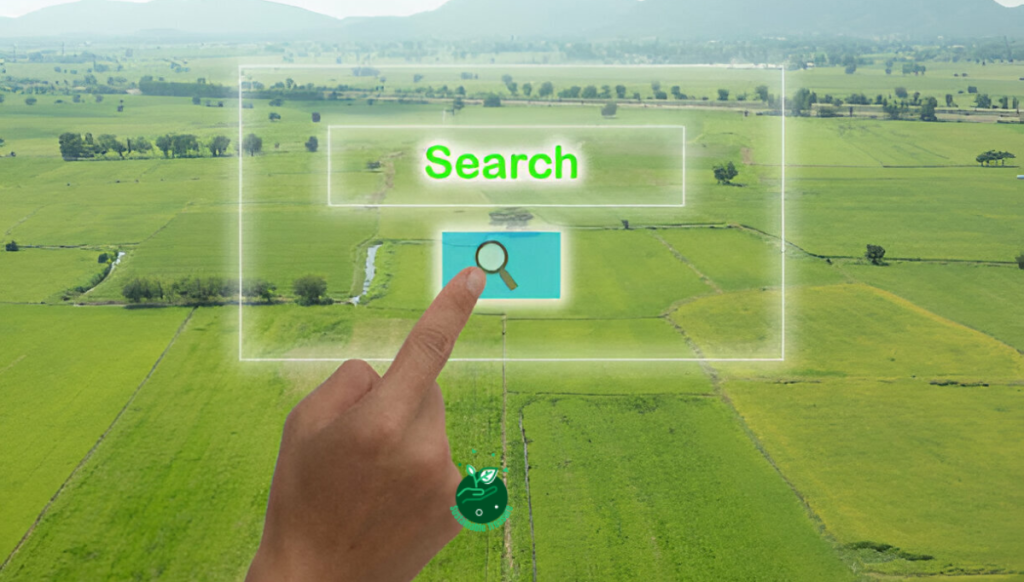Table of Contents
Are you wandering how to evaluate Biodiversity investment opportunities? Assessing biodiversity investments is a complex yet crucial task.
By carefully evaluating these opportunities, we can generate financial returns while preserving our planet’s precious natural resources.
As a child, I vividly remember camping trips in lush forests, marveling at the intricate tapestry of life. Years later, witnessing the rapid decline of these ecosystems due to unsustainable practices shook me to the core.
It became clear that responsible investments in biodiversity conservation were not just ethical but also economically vital.
Drawing from my personal experiences and expertise in sustainable finance, I promise to guide you through the nuances of evaluating biodiversity investments, empowering you to make informed decisions.
Here we go.
Understanding Biodiversity’s Financial Potential

Biodiversity investments offer a unique opportunity to generate profits while preserving nature’s bounty.
By recognizing the financial value of ecosystems, we can develop sustainable business models that benefit both the environment and our bottom line.
Investing in biodiversity projects can yield long-term returns through activities like ecotourism, sustainable agriculture, and the development of new pharmaceuticals derived from nature’s vast genetic library.
Moreover, preserving biodiversity can mitigate risks associated with resource depletion, ensuring a steady supply of raw materials for various industries.
Assessing the Project’s Ecological Impact
Before committing funds, it’s crucial to evaluate the project’s potential impact on the local ecosystem.
A thorough environmental assessment should be conducted to identify any risks or unintended consequences that could arise from the proposed activities.
Seek expert advice from ecologists, conservationists, and local communities to understand the delicate balance of the ecosystem in question.
Consider factors such as habitat preservation, species conservation, and the potential for ecological restoration or enhancement.
Analyzing the Legal and Regulatory Landscape
Biodiversity investments are often subject to a complex web of local, national, and international laws and regulations.
Thoroughly research the legal framework governing the project’s location to ensure compliance and avoid potential legal pitfalls.
Key areas to investigate include:
- Environmental protection laws
- Land ownership and usage rights
- Permits and licensing requirements
- Benefit-sharing agreements with local communities
Consulting with legal experts and engaging with relevant government agencies can help navigate this intricate legal landscape.
Evaluating the Project’s Social Impact
Responsible biodiversity investments should prioritize the well-being of local communities and respect their cultural heritage. Conduct a comprehensive social impact assessment to identify potential risks and opportunities.
Engage with local stakeholders, including indigenous groups, to understand their perspectives and concerns.
Develop strategies to ensure fair and equitable benefit-sharing, as well as mechanisms for community involvement in decision-making processes.
Conducting Thorough Financial Due Diligence
Like any investment opportunity, biodiversity projects require rigorous financial due diligence.
Analyze the project’s business model, revenue streams, and potential for scalability and long-term profitability.
Key financial considerations include:
- Projected cash flows and return on investment
- Financing options and access to capital
- Risk management strategies
- Exit strategies and potential for asset appreciation
Seek professional advice from financial experts with experience in biodiversity investments to ensure a comprehensive assessment.
Identifying Reputable Project Developers
The success of a biodiversity investment largely depends on the expertise and integrity of the project developers.
Thoroughly vet potential partners to ensure they have a proven track record in sustainable development and a genuine commitment to environmental stewardship.
Research the developers’ past projects, scrutinize their financial stability, and evaluate their approach to stakeholder engagement and community involvement. Reputable developers should be transparent about their plans, methodologies, and potential risks.
Exploring Sustainable Financing Options
Biodiversity investments often require innovative financing solutions that align with the project’s environmental and social objectives.
Explore options such as impact investing, green bonds, and blended finance models that combine public and private funds.
Collaborate with financial institutions, development agencies, and philanthropic organizations that specialize in sustainable finance.
Their expertise can help structure financing arrangements that balance financial returns with environmental and social impact.
Leveraging Biodiversity Offsets and Credits
Biodiversity offsets and credits can provide additional revenue streams for biodiversity investments.
These mechanisms allow companies to compensate for their environmental impacts by funding conservation projects or purchasing credits from projects that generate biodiversity benefits.
Research the available offset and credit programs in your target region, and evaluate their credibility and potential for generating sustainable income.
Ensure that the project’s biodiversity benefits are quantifiable and verifiable to meet the requirements of these programs.
Fostering Partnerships and Collaborations
Biodiversity investments often require a collaborative approach, involving diverse stakeholders from various sectors.
Foster partnerships with government agencies, non-governmental organizations (NGOs), research institutions, and local communities to leverage their expertise and resources.
Collaborations can facilitate knowledge sharing, capacity building, and the development of innovative solutions.
They can also help secure funding, access new markets, and enhance the project’s overall impact and credibility.
Monitoring and Reporting on Progress
Establishing robust monitoring and reporting frameworks is essential for tracking the project’s performance and demonstrating its environmental and social impacts.
Develop clear indicators and metrics aligned with recognized standards and best practices. Regularly report on progress, challenges, and lessons learned to maintain transparency and accountability.
Consider engaging independent third-party auditors to verify the project’s outcomes and ensure credibility with investors and stakeholders.
Investing in Sustainable Agriculture
Sustainable agriculture practices that promote biodiversity can be a lucrative investment opportunity.
From organic farming to agroforestry systems, these approaches not only protect natural ecosystems but also create valuable products for local and global markets.
One example is the Mavingire Agroforestry Project in Zimbabwe, where smallholder farmers have adopted sustainable practices like intercropping and natural pest management.
This project has generated carbon credits and increased crop yields, providing financial benefits to the local community.
Ecotourism and Conservation Initiatives
Ecotourism ventures that prioritize biodiversity conservation can offer attractive investment opportunities.
By promoting responsible tourism practices and generating revenue from activities like wildlife viewing, hiking, and cultural experiences, these projects can support local economies while preserving natural habitats.
The Virunga National Park in the Democratic Republic of Congo is a prime example. Despite facing numerous challenges, the park’s ecosystem and biodiversity have been preserved through responsible tourism initiatives, providing employment opportunities and income for local communities.
Sustainable Forestry and Forest Conservation
Sustainable forestry practices that maintain biodiversity can yield long-term financial returns while mitigating environmental impacts.
Investing in certified sustainable forestry operations, forest conservation projects, or initiatives that support community-based forest management can be a viable option.
For instance, the Gola Rainforest Conservation Project in Sierra Leone has generated carbon credits and revenue from sustainable timber harvesting, while protecting one of the last remaining tracts of the Upper Guinean Rainforest and supporting local livelihoods.
Biodiversity-Focused Biotechnology and Bioprospecting
Nature’s vast genetic diversity holds immense potential for the development of new pharmaceuticals, industrial enzymes, and other valuable products.
Investing in biotechnology companies or bioprospecting initiatives that responsibly explore and utilize this genetic wealth can yield significant returns.
One successful example is the collaboration between the Brazilian biodiversity company Natura and the São Paulo Research Foundation (FAPESP), which has led to the discovery of new bioactive compounds with potential applications in the cosmetics and pharmaceutical industries.
Renewable Energy and Environmental Restoration
Investments in renewable energy projects that prioritize biodiversity conservation and environmental restoration can create synergies between clean energy generation and ecosystem protection.
These initiatives often involve reforestation, habitat restoration, and the development of sustainable bioenergy crops.
The Kariba REDD+ Project in Zimbabwe is a prime example, combining renewable energy generation from the Kariba Dam with forest conservation efforts and community development initiatives, generating carbon credits and promoting biodiversity.
Impact Investing and Blended Finance
Impact investing and blended finance models offer innovative approaches to financing biodiversity projects.
These models combine private capital with public or philanthropic funds, aligning financial returns with environmental and social impacts.
One notable example is the Sustainable India Finance Facility (SIFF), a blended finance initiative that provides long-term loans to projects focusing on renewable energy, sustainable agriculture, and biodiversity conservation, while offering private investors risk-adjusted returns.
Biodiversity-Friendly Supply Chain Investments
Investing in companies that prioritize biodiversity-friendly supply chain practices can contribute to the preservation of ecosystems while generating financial returns.
These initiatives often involve sustainable sourcing, responsible resource management, and the development of sustainable products and services.
The Nespresso AAA Sustainable Quality Program™ is a prime example, where the company invests in sustainable coffee farming practices that promote biodiversity, soil conservation, and water management, while ensuring a stable supply of high-quality coffee for their business.
Biodiversity Banking and Habitat Credit Trading
Biodiversity banking and habitat credit trading mechanisms allow developers to offset their environmental impacts by purchasing credits from projects that conserve or restore biodiversity and natural habitats.
These mechanisms incentivize investments in biodiversity conservation by creating a market for biodiversity credits.
The Willamette Partnership in Oregon, USA, is a successful example of a habitat credit trading program.
It has facilitated the restoration of streams, wetlands, and prairies by enabling developers to purchase credits from conservation projects, generating revenue for landowners and supporting biodiversity.
Microfinance and Community-Based Conservation
Microfinance initiatives that support community-based conservation efforts can be an effective way to invest in biodiversity while promoting sustainable livelihoods.
These programs provide small loans and financial services to local communities, enabling them to develop sustainable income-generating activities that align with conservation goals.
The Conservation Through Public Health (CTPH) program in Uganda is a notable example, where microfinance loans have been provided to communities for income-generating activities like beekeeping and sustainable agriculture, reducing their dependence on forest resources and promoting biodiversity conservation.
Biodiversity Offsets and Compensatory Mitigation
Biodiversity offsets and compensatory mitigation programs require developers to compensate for unavoidable environmental impacts by financing biodiversity conservation projects.
These programs create investment opportunities in activities like habitat restoration, species reintroduction, and the creation of protected areas.
The Western Sydney Biodiversity Certification program in Australia is a successful example, where developers are required to purchase biodiversity credits to offset their impacts, generating revenue for landowners who conserve and manage biodiversity on their properties.
By investing in these diverse biodiversity opportunities, we can generate financial returns while contributing to the preservation of our planet’s natural heritage.
However, it’s crucial to approach these investments with due diligence, transparency, and a genuine commitment to sustainability and ethical practices.
FAQs

How Can I Ensure My Biodiversity Investment Is Truly Sustainable?
Evaluating the long-term sustainability of a biodiversity investment is crucial. Seek projects that prioritize ecosystem preservation, responsible resource management, and community engagement.
Review their environmental impact assessments, monitoring frameworks, and plans for stakeholder collaboration.
Reputable third-party certifications, such as those from the Rainforest Alliance or Forest Stewardship Council, can provide assurance that the project adheres to rigorous sustainability standards.
Additionally, engage with local communities to understand their perspectives and ensure fair benefit-sharing arrangements.
What Are The Potential Financial Returns From Biodiversity Investments?
The financial returns from biodiversity investments can vary significantly depending on the project type, location, and market conditions.
Generally, these investments offer a combination of direct revenue streams and indirect benefits from ecosystem services.
Direct revenues may come from sustainable products (e.g., certified timber, organic agriculture), ecotourism activities, or the sale of biodiversity credits or offsets.
Indirect benefits include cost savings from resource conservation, risk mitigation from environmental degradation, and potential asset appreciation over time.
How Do I Evaluate The Social And Cultural Impacts Of A Project?
Conducting a comprehensive social and cultural impact assessment is crucial for responsible biodiversity investments.
Engage with local communities, indigenous groups, and relevant stakeholders to understand their perspectives, concerns, and cultural values.
Assess the project’s potential impacts on traditional livelihoods, access to natural resources, and sacred or culturally significant sites.
Develop strategies for meaningful community participation, fair benefit-sharing, and the preservation of cultural heritage.
What Are The Key Legal And Regulatory Considerations?
Biodiversity investments are subject to a complex web of local, national, and international laws and regulations.
Thoroughly research the legal framework governing the project’s location, including environmental protection laws, land ownership rights, permitting requirements, and benefit-sharing agreements.
Consult with legal experts to ensure compliance and navigate potential legal pitfalls. Stay updated on evolving regulations and international treaties related to biodiversity conservation and sustainable development.
How Can I Mitigate The Risks Associated With Biodiversity Investments?
Biodiversity investments carry unique risks, such as political instability, regulatory changes, and environmental challenges like climate change or natural disasters. Conduct comprehensive due diligence to identify and assess potential risks.
Develop robust risk management strategies, including diversification, insurance policies, and contingency plans.
Consider partnering with experienced organizations, leveraging blended finance models, or exploring risk-sharing mechanisms to mitigate exposure.
What Role Can Impact Investing Play In Biodiversity Conservation?
Impact investing, which prioritizes both financial returns and positive environmental and social impacts, can be a powerful tool for biodiversity conservation.
Impact investors seek to direct capital towards projects that generate measurable, verifiable, and sustainable benefits.
By aligning financial incentives with conservation goals, impact investing can mobilize significant resources for biodiversity initiatives.
It can also foster innovation, catalyze partnerships, and promote transparency and accountability in the sector.
How Can I Ensure Transparency And Accountability In My Investments?
Transparency and accountability are essential for building trust and credibility in biodiversity investments.
Establish robust monitoring and reporting frameworks aligned with recognized standards and best practices.
Regularly disclose project performance, challenges, and lessons learned through transparent reporting channels.
Consider engaging independent third-party auditors or certifiers to verify the project’s environmental and social impacts objectively.
What Are Some Successful Examples Of Biodiversity Investment Projects?
There are numerous successful examples of biodiversity investment projects around the world. The Adelante Bushland Reserve in Australia combines sustainable forestry, carbon sequestration, and biodiversity conservation, generating returns from timber sales and carbon credits.
The Srepok Wilderness Area in Cambodia supports community-based ecotourism and sustainable agriculture while protecting endangered species like the Asian elephant.
The Ocean Rainforest project in the Bahamas invests in sustainable seaweed farming and coral reef restoration, generating revenue while promoting marine biodiversity.
Conclusion
As we navigate the intricacies of evaluating biodiversity investment opportunities, let us remember our role as stewards of this planet’s precious ecosystems.
By applying the strategies and considerations outlined in this article, we can make informed decisions that harmonize financial growth with environmental preservation.
The time to act is now. Embrace biodiversity investments with a commitment to due diligence, transparency, and ethical practices.
Together, we can pave the way for a sustainable future, where economic prosperity and ecological integrity coexist in perfect balance.



